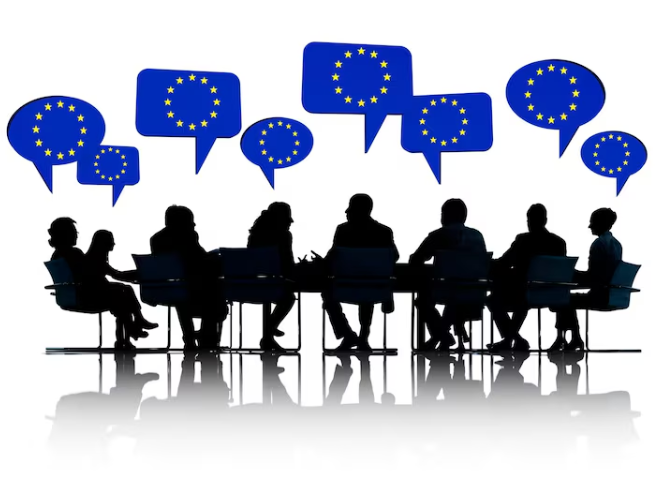
How Translation Shapes Global Success
How Translation Shapes Global Success
Why language matters for business
Language influences perception, trust, and intent. Customers judge brands on how well they speak to them — literally and figuratively. Misunderstandings caused by poor translation can damage credibility and reduce conversion rates, while precise, culturally adapted messaging increases engagement and loyalty. For corporate communications, investor relations, legal documents, and marketing collateral, accuracy is critical; a mistake in wording can create regulatory compliance issues, misinterpret contractual obligations, or harm reputation.
Translation vs. localization: the difference that counts
Translation converts words from one language to another; localization adapts content to local cultural, legal, and market expectations. A translated product manual is useful, but a localized product experience aligns measurements, examples, images, tone, and user flow to local norms. Localization goes beyond vocabulary and grammar — it adapts to holidays, payment methods, regulatory frameworks, and even color symbolism. Savvy companies combine both disciplines to ensure messages are accurate and locally resonant.
Real business outcomes driven by professional language services
Investments in translation and localization deliver measurable returns. Companies that localize product pages see higher conversion rates and larger average order values. Global sales teams that use professionally translated proposals and contracts reduce negotiation cycles and close deals faster. From a risk perspective, clear translations of safety information, compliance documents, and contracts lower the likelihood of costly disputes. Language services, therefore, are not an overhead but a strategic investment.
When machine translation is enough — and when it is not
Machine translation (MT) has advanced rapidly and is invaluable for speed, cost-efficiency, and handling large volumes of content. It is excellent for getting the gist of user-generated content, internal communications, or early-stage drafts. However, MT alone is insufficient for customer-facing marketing, legal contracts, or brand copy that requires nuance and emotional intelligence. The best approach is hybrid: use MT to accelerate throughput, then apply human post-editing and cultural review to ensure accuracy, tone, and brand alignment.
Cultural nuance and brand voice: the intangible value
Brand voice is a subtle, strategic asset. Translating taglines or brand promises word-for-word often strips them of meaning or charm. Cultural nuance — humor, formality, idiom — shapes how a message is received. Professional linguists who understand brand strategy preserve intent while crafting language that resonates locally. This preserves the emotional and commercial power of messaging across markets and maintains a consistent global identity.
Operationalizing translation in an organization
Embedding translation into business operations requires systems and governance. Start with a language strategy: prioritize markets, identify content types for translation, and set quality benchmarks. Implement a translation management workflow that connects source content systems (CMS, product catalogs, legal repositories) with translation vendors and reviewers. Establish glossaries and style guides that reflect terminology and brand voice. Track KPIs such as turnaround time, post-publication issues, and localization impact on conversion metrics.
Compliance, security, and confidentiality
Legal and regulatory content demands the highest levels of accuracy and data security. Choose language partners with robust confidentiality agreements, secure file transfer protocols, and experience in your industry’s regulatory environment. Certified translations are often required for filings, patents, and contracts; using qualified translators and notarization processes reduces legal risk and ensures documents are accepted by authorities.
Measuring success and demonstrating ROI
Directors must see translation as measurable. Define business outcomes tied to language work: increased sales in localized markets, reduced customer service tickets, faster contract cycles, or higher NPS in target regions. Use A/B testing to compare localized versus non-localized content and track conversion lift. Report these findings to stakeholders to demonstrate how language investments drive commercial performance and strategic objectives.
Choosing the right partner
Not all language service providers are equal. Evaluate partners on domain expertise, project management, quality assurance processes (like human review and linguistic QA), and technological capabilities (translation memory, terminology management, and CMS integration). Look for teams that become strategic advisers — not just vendors — and that offer scalability, transparent pricing, and a track record of industry-specific work.
Practical first steps for company directors
If you are starting from scratch, begin with a short audit: identify high-impact content (legal, product, sales, marketing), estimate volume, and prioritize markets with the highest revenue potential. Establish a pilot project to localize one product page or one marketing campaign and measure results. Create a glossary of core company terms and a style guide to ensure consistency. Finally, appoint an internal champion to coordinate with language partners and ensure continuous improvement.
Conclusion
Language barriers no longer have to be a brake on international growth. With a strategic approach to translation and localization, companies turn linguistic diversity into a competitive advantage. For directors, the choice is clear: invest in quality language services, align them with business metrics, and use cultural intelligence to build trust in every market you enter. The result is clearer contracts, stronger client relationships, and a brand that speaks fluently across borders.
Stay Connected for More Travel and Lifestyle Inspiration. For more insights into travel, culture, and lifestyle tips, follow me on Instagram @salvadorordorica. If you’re seeking professional translation and localization services to enhance your global ventures, visit The Spanish Group — your trusted partner in bridging cultures worldwide.





